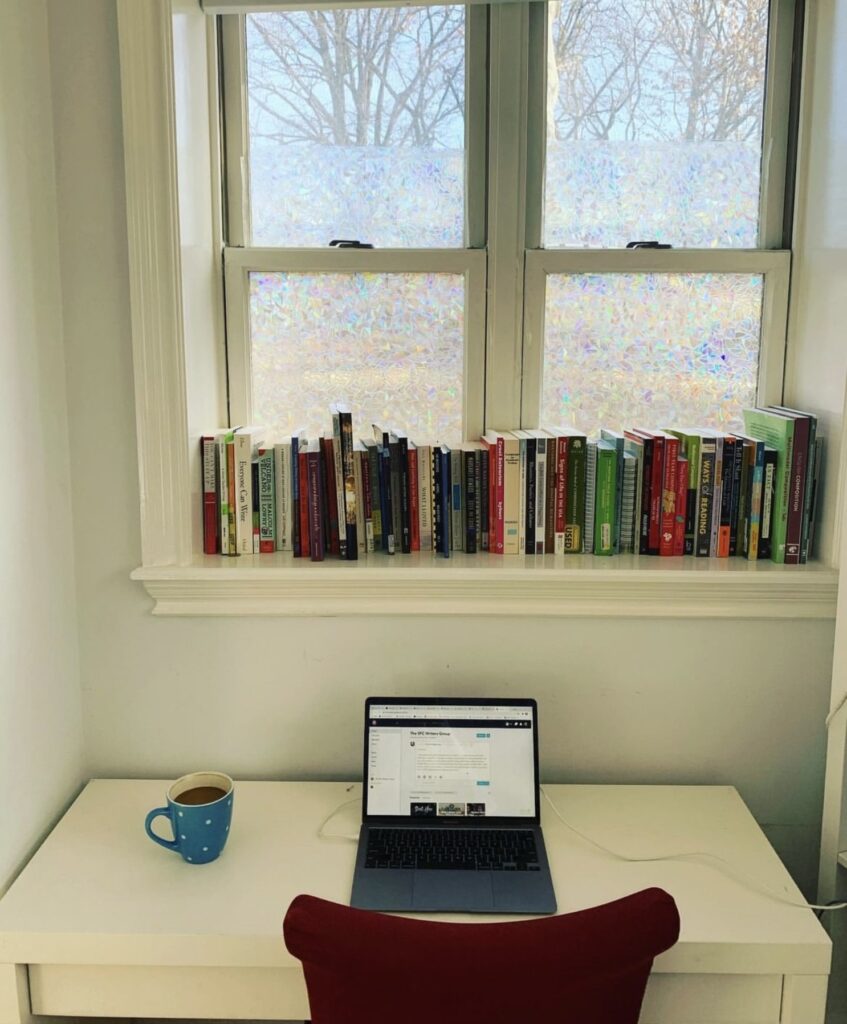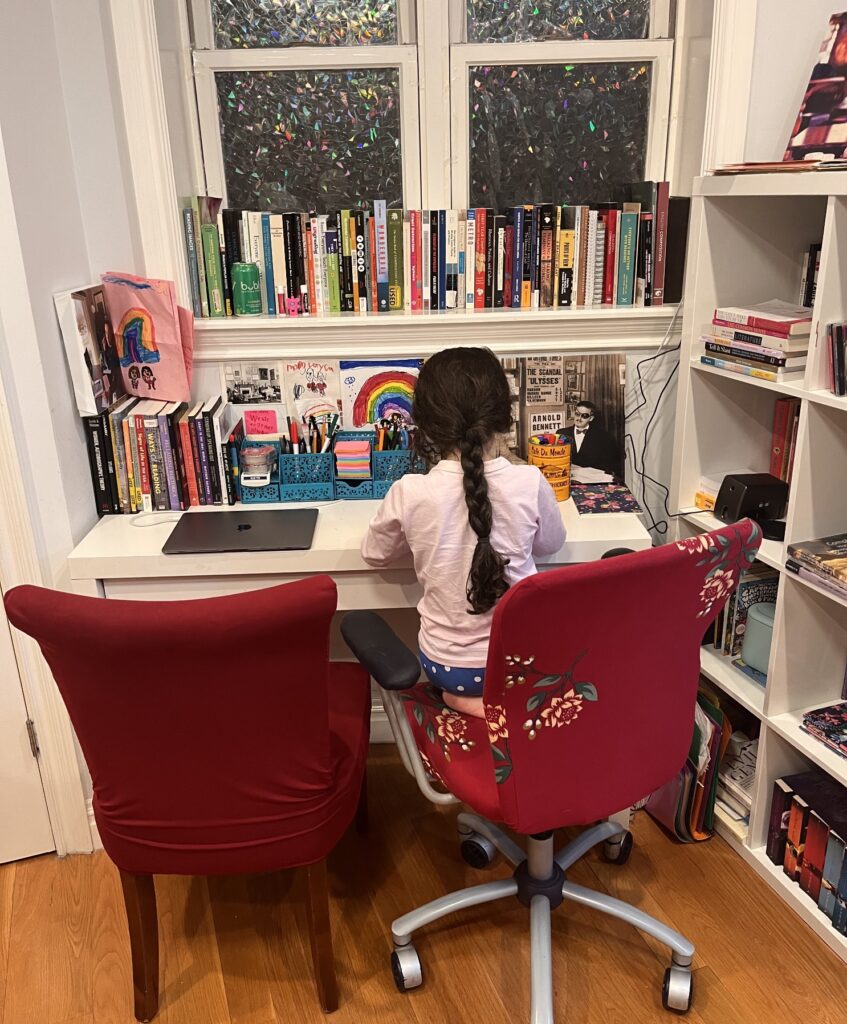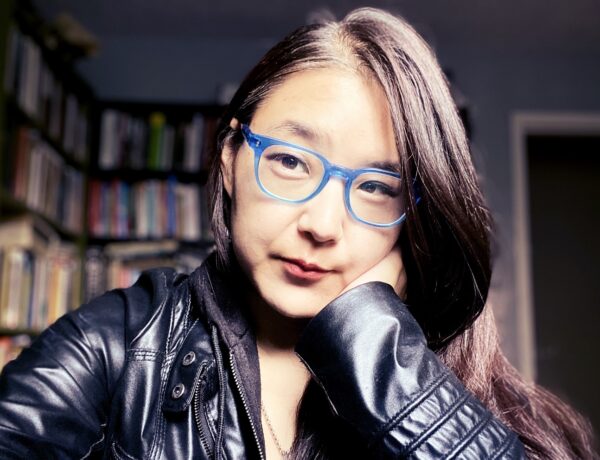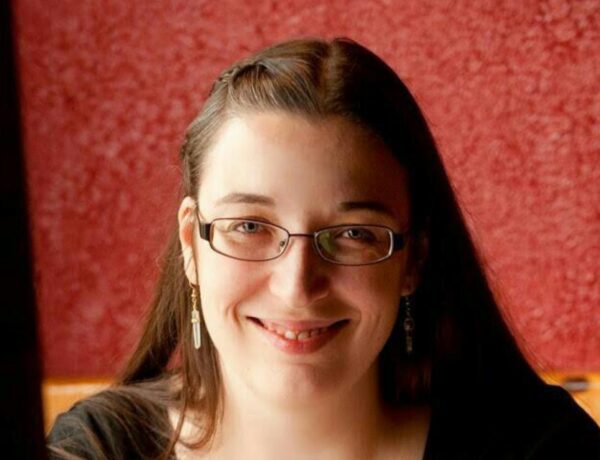Caroline Hagood is an Assistant Professor of Literature, Writing and Publishing, Director of Undergraduate Writing, and MFA faculty member at St. Francis College in Brooklyn.
She is the author of several books including Lunatic Speaks, Making Maxine’s Baby, Ghosts of America, Ways of Looking at a Woman, and Weird Girls: Writing the Art Monster. Her work has appeared in Electric Literature, Creative Nonfiction, LitHub, and others.
Caroline is a Pushcart nominee, NYFA City Arts Corps Grant recipient, and a series editor for the Loose Translation Award. She holds a PhD from Fordham and teaches courses in American literature, first-year writing, and creative writing. Her research focuses on innovative forms of creative nonfiction and the intersection of visual culture, digital media, race, and gender in contemporary American literature.
Each week, we publish a new daily writing routine from a famous author. Subscribe to our newsletter so you don’t miss out!
Hi Caroline, welcome to Famous Writing Routines, great to have you here with us today! Your work as a professor at St. Francis College and your research focus is on innovative forms of creative nonfiction and the intersection of visual culture, digital media, race, and gender in contemporary American literature. How do these experiences inform your writing process and the themes you explore in your works?
Well, for one thing, studying all these amazing texts certainly keeps me humble. I think the biggest thing this focus brings to my own work is my interest in connecting very different texts in my own writing, putting unlikely authors in conversation with each other. The way it informs my writing process has more to do with making it more layered and chaotic. What I mean by this is that my work space is usually heaped with different pieces of the texts I want to comment on or include in my writing project in some way.
You have published several poetry books, a novel, and book-length essays. How do you approach writing in different genres, and how do you maintain a balance between them in your creative work?
One of my bizarre writing practices is that I like to write two books in different genres at the same time, which sort of become strange siblings. This worked out in such an odd way with my last two books because my nonfiction exploration of the art monster (Weird Girls: Writing the Art Monster) and my fictional exploration of similar themes (Filthy Creation, which is coming out in May) were accepted within a day of each other after a year of rejections.
In some odd way, it helps me to approach ideas from these different vantage points at the same time. The projects feed each other, and I can turn to one when I’ve lost patience or confidence in the other, and it will give me the motivation to go back to the other one eventually.
I usually work on these two documents in simultaneously open windows on my computer. This all started when I was writing my English PhD dissertation. I had to write something creative at the same time or I would have lost my mind, so I wrote a book-length lyric essay that satirically took the form of a dissertation, Ways of Looking at a Woman.
Weird Girls: Writing the Art Monster has received critical acclaim and has been described as a “necessary little lighthouse with its bloody but unbowed heart of feminist grotesquerie.” Can you share your thoughts on writing about feminist themes, and how do you navigate that in your work?
Even when I don’t set out to do it, it seems that I end up in feminist territory. I guess I’m just fascinated by this idea of a “woman” and all the qualities we have assigned to her over time. It’s such incredible performance art to be a woman. Cultural ideas about gender have been used in some disturbing ways, and I also try to bring attention to these so that we can hopefully take it all apart and build something more expansive and creative instead.
As an editor at Hanging Loose Press and series editor for the Loose Translation Award, how do you approach the editing process, and what is your philosophy on working with writers and helping to bring their work to life?
Being a professor and editor is so crucial for me because it gets me out of my study where I’m writing and focusing on my own career, and it trains my attention on helping other writers and building inclusive literary communities. I also just live for that moment when I discover a firecracker of a book like the one by Rebecca Suzuki that just won the Loose Translation Award. You will know her name one day.
Your novel, Filthy Creation, is forthcoming in May 2023. Can you give us a sneak peek into what we can expect from the book, and how has your writing routine changed since your last publication?
No matter how many times I tell students to have their elevator speeches ready for their books, I always find it so hard to sum up my own work. Filthy Creation is about a Frankenstein-obsessed teenage girl artist, who’s grappling with the death of her father while simultaneously trying to discover her own identity as an artist and the identity of her biological father.
My writing routine hasn’t changed too much. It remains a flurry of activity performed with children usually playing around/with me. I would describe my routine as a mixture of superstition, hope, interruption, and brief shining moments of hard work. By superstition I just mean that I’m a little out there when it comes to the various things that I believe I need in order to get into the writing state of mind.
These things include:
- The right music (usually instrumental so it doesn’t distract me, and I highly recommend Miles Davis’s Kind of Blue; give it a try and you’ll see the magic)
- Huge amounts of strong coffee
- Photographs of my favorite writers to inspire me
- Little magical trinkets I’ve collected over the years that I hope to are good luck
- A window where I can see even a scrap of tree in this city
Of course, so often I just have to bang out writing on my phone on the subway with no bells and whistles because that’s real life.
Discover the daily writing habits of authors like Stephen King, Neil Gaiman, and Gillian Flynn with Famous Writing Routines Vol. 1 and learn how to take your writing to the next level. Grab your copy today!
You have been recognized with several awards, including a 2021 NYFA City Arts Corps Grant and your novel, Misfits, was a finalist for the 2021 University of New Orleans Press Lab Prize. How do awards and recognition impact your writing process and motivation?
They mostly don’t. I guess they give me a sliver of hope that someone is enjoying reading what I’m writing, though. So, there’s that. That can certainly be motivating.
What does a typical writing day look like for you?
I usually try to wake up and write before my sweet, needy kids descend upon me. Then I also try to write on the notes app on my phone on the subway on my way to teach. Then I write after my kids go to bed, before going into a cookie and Netflix haze.
If you could have a conversation with any author throughout history about their writing routine and creative process, who would that be and why?
I think I’d like to talk with James Baldwin both because I love his writing and because I love what I’ve read about his writing process.
I’d love to know about the books you’re reading at the moment. What have been some of your favourite recent reads?
My pile beside my bed has reached frightening proportions. Recently I’ve loved Erica Barry’s Wolfish (forthcoming Feb 21st), Erika Wurth’s White Horse, Elisa Albert’s Human Blues, Chris Campanioni’s A and B and Also Nothing, Hafizah Geter’s The Black Period, Carley Moore’s Panpocalypse, Jiwon Choi’s I Used to be Korean, Patricia Grisafi’s Breaking Down Plath, Joanna Fuhrman’s To a New Era, Mary-Kim Arnold’s Litany for the Long Moment, James Tate Hill’s Blind Man’s Bluff, Sharon Mesmer’s Greetings From My Girlie Leisure Place, Melissa Ostrom’s Unleaving, and Bunkong Tuon’s Dead Tongue.
What does your current writing workspace look like?
It’s funny you should ask. It started out pristine and now my six-year-old daughter has moved in. She has covered it with the pictures she has made me, her art materials, and even added another chair for her to sit and make her art while I do my writing. Her pictures and the little writerly inspiration things I’ve put up have sort of melded together into this very outlandish space that makes me happier than anything else in the world. I’ll provide photo documentation for you. You may be sorry you asked.


Affiliate disclaimer: Some links on this website are affiliate links. We may earn a small commission if you make a purchase through these links, but only promote products we truly believe in. We disclose affiliate links and give honest reviews.



No Comments